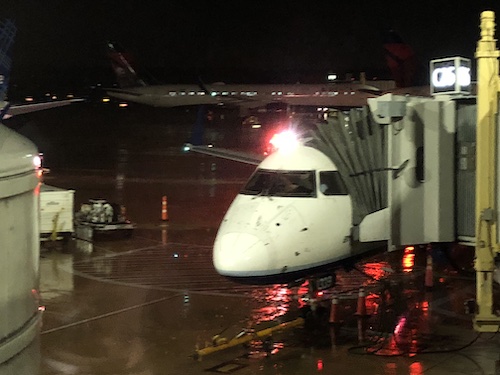Rain was gently falling. Lightning arced across the dark sky. The brilliant flash reflected off of the wet black pavement and the shiny airplane parked at the gate. A groan erupted from the collection of stranded passengers standing at the gate. The answering thunder seemed to punctuate their frustration and a new downpour begin to ensue. Security radios squawked to life around the room, “Lightning detected within 3-mile radius, evacuate ramps.” Hushed complaints and grumbles from the passengers were silenced as the flight crew announced the inevitable delay. We were supposed to depart from the Ronald Reagan Washington National Airport (DCA) airport at 4:30pm and now it was 9pm. We had spent an incredible two days with our SRE team supporting National Geographic. They had introduced us to the collection of applications and systems that power NatGeo’s mission to deliver great content and experiences that inspire people across the world to appreciate, care for and explore our incredible planet. At the moment, we were appreciating how unpredictable this planet of ours can be and how it doesn’t play by airline schedules. Our flight to the Orlando Airport (MCO) was about to be cancelled.
What do you do when your plans fall apart? As I stared out into the dark, rainy and surprisingly peaceful night, I heard chatter of anxiety, anger, frustration, and confusion all around me. I felt some of that myself. As the next lightning strike lit up the clouds, I was reminded that my worry would not change the weather. When our plans are thwarted or problems arrive at our door, what do we do? Do we worry? I confess, I come from a long line of worriers. Instinct seems to coach you to wring your hands, pace and fret. But none of that helps. Many years ago I had a realization that life is a series of circumstances we find ourselves in. Our plans are programs we write to move us from one situation to the next, one state to the next. When those plans involve external dependencies, like the airline or the weather, we can find our plans thwarted. When that occurs, instead of activating the no-op infinite worry loop, reprogram. I have learned to assess the situation and ask myself what are the controllable actions we can take to address the situation? We can’t control the weather or other dependencies, but we can control how we respond to a new unknown state and our next steps.
When life throws you for a loop, break out. Don’t stay in the trap. You can’t control everything, nor should you try, but you can control your next move. What moves are available to you? Get creative and enumerate all the possible next steps. Now, take action. Success or failure? Assess your current state and take another action. There is incredible peace and clarity in knowing what you can do or can’t do, even if your original plans are spoiled. Use the flow of circumstances around you to power, inform and navigate your journey to the next moment. Then to the next.
Our original plans to Orlando were unwinding. Our next actions were to explore all alternative ways to travel to Orlando. We reserved seats on a flight the following day and made a hotel reservation for the night just in case our flight was cancelled. Beyond that, our next action was to wait, enjoy the falling rain and relax until the verdict came back. Changes would be required, but we would adapt and move forward.
“Don’t worry, take action.” I’ve learned to coach myself on that advice over the years. It reduces stress, adds clarity and avoids the fretful worry loop. Are you worried or stressed? Press pause and assess your circumstances. What is controllable and what actions can you take? Avoid fretting over the uncontrollable and embrace the next step. Appreciate the clarity that it brings and don’t forget to enjoy the peaceful rain and moments that those unplanned events can bring your way.

